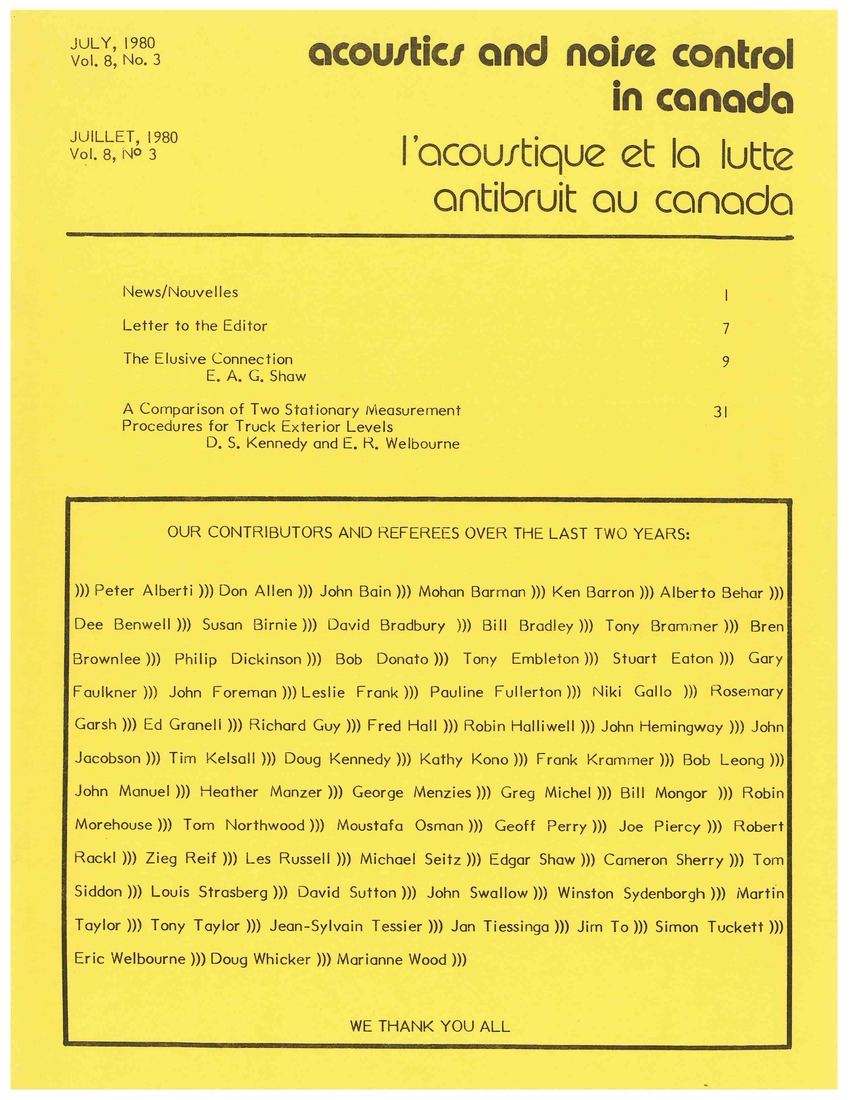The Elusive Connection
Abstract
In his monograph Electroacoustics, F.V. HUNT (1954) described the carbon microphone as "the only 'bad connection' tolerated in the telephone system". This whimsical comment was, of course, inspired by the unique electrical properties of that remarkable transducer. A broader view, encompassing the acoustical as well as the electrical elements of the system, would surely compel us to recognize the earphone, another essential element of the telephone system, as a connection of equally questionable quality. It was indeed this doubtful connection, lying at the heart of audiometric measurements, which first prompted my colleagues and I in Ottawa to enquire about the acoustics of the external ear many years ago. It seemed then, as now, that despite the remarkable advances in electromechanical transduction since the days of Alexander Graham Bell, the coupling between earphones and ears still rested on a very flimsy acoustical foundation. We soon found that there were questions concerning the external ear which were larger than the technological artifacts that had started us on our journey and it is to these larger questions that my title refers. The "elusive connection", then, is associated with the external ear but really embraces the entire transmission path between the sound source, which may be near the ear or in the far field, and the oval window of the cochlea which is the input terminal of the inner ear. The questions which arise fall under at least five headings: (i) Anatomy and function: How does the external ear work? What are the functions of its various components? How is it coupled to the middle ear? What parameters best define its performance? (ii) Reception efficiency: How well does the external ear collect sound energy? How well is that energy transmitted to the inner ear? (iii) Sound localization: To what extent are we able to localize sound sources away from the horizontal plane especially sources lying in the symmetry plane of the head? What localization tasks can we perform with a single ear? What are the relevant auditory cues? (iv) Space perception: Under what circumstances and how well do we externalize sound when listening under artificial conditions such as those arising with earphones? (v) Measurement techniques: How should we specify and measure acoustic stimuli? As we shall see, some of these questions were raised more than one hundred years ago but still lack precise answers.Additional Files
Published
How to Cite
Issue
Section
License
Author Licensing Addendum
This Licensing Addendum ("Addendum") is entered into between the undersigned Author(s) and Canadian Acoustics journal published by the Canadian Acoustical Association (hereinafter referred to as the "Publisher"). The Author(s) and the Publisher agree as follows:
-
Retained Rights: The Author(s) retain(s) the following rights:
- The right to reproduce, distribute, and publicly display the Work on the Author's personal website or the website of the Author's institution.
- The right to use the Work in the Author's teaching activities and presentations.
- The right to include the Work in a compilation for the Author's personal use, not for sale.
-
Grant of License: The Author(s) grant(s) to the Publisher a worldwide exclusive license to publish, reproduce, distribute, and display the Work in Canadian Acoustics and any other formats and media deemed appropriate by the Publisher.
-
Attribution: The Publisher agrees to include proper attribution to the Author(s) in all publications and reproductions of the Work.
-
No Conflict: This Addendum is intended to be in harmony with, and not in conflict with, the terms and conditions of the original agreement entered into between the Author(s) and the Publisher.
-
Copyright Clause: Copyright on articles is held by the Author(s). The corresponding Author has the right to grant on behalf of all Authors and does grant on behalf of all Authors, a worldwide exclusive license to the Publisher and its licensees in perpetuity, in all forms, formats, and media (whether known now or created in the future), including but not limited to the rights to publish, reproduce, distribute, display, store, translate, create adaptations, reprints, include within collections, and create summaries, extracts, and/or abstracts of the Contribution.


